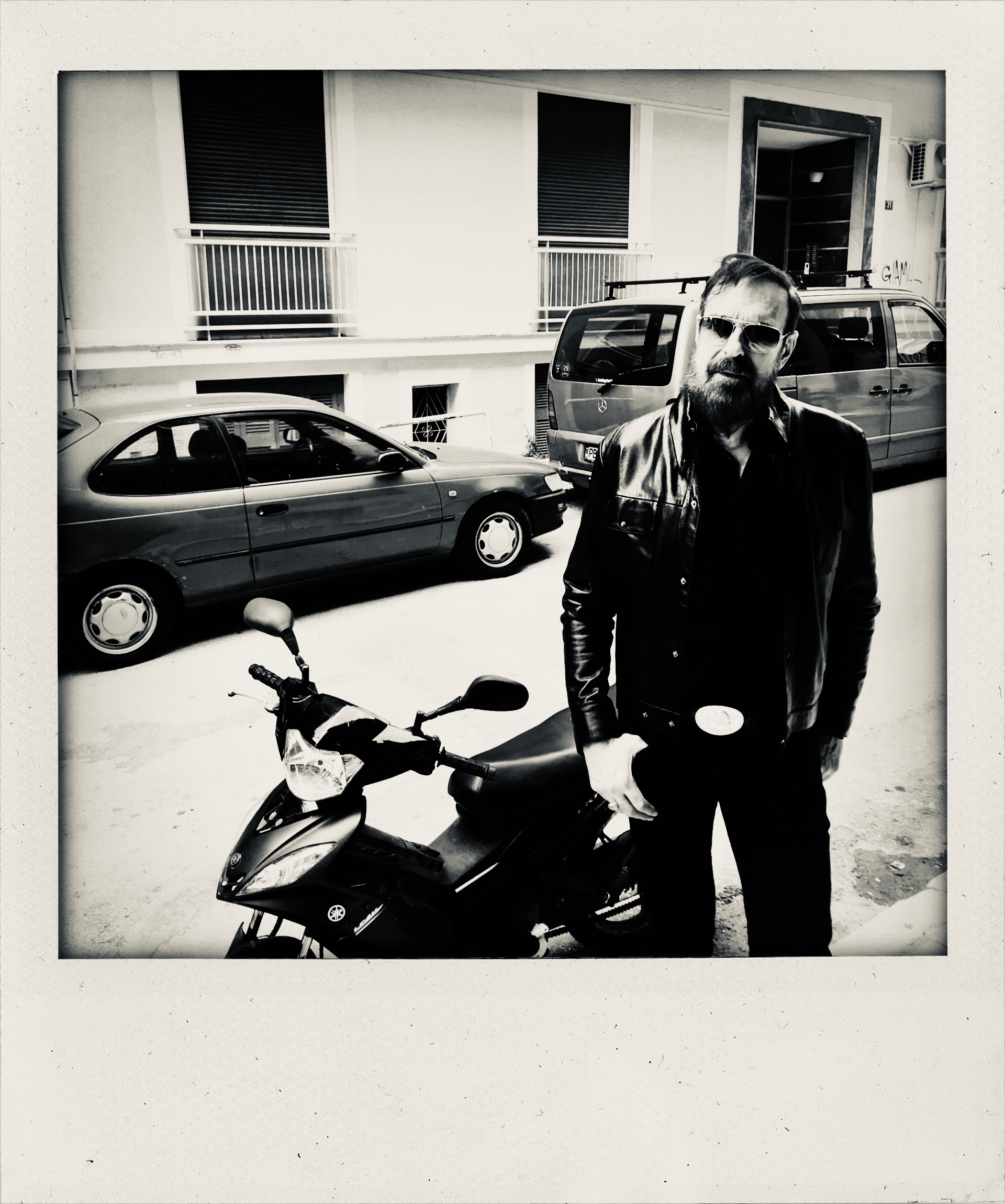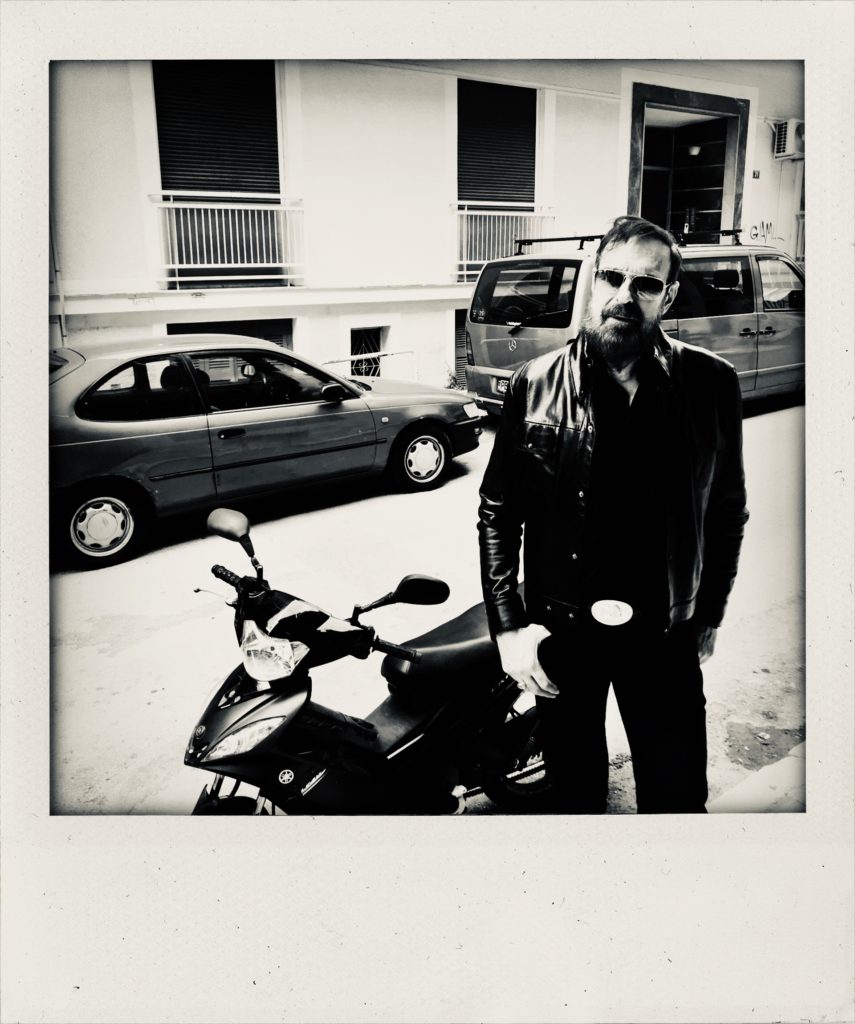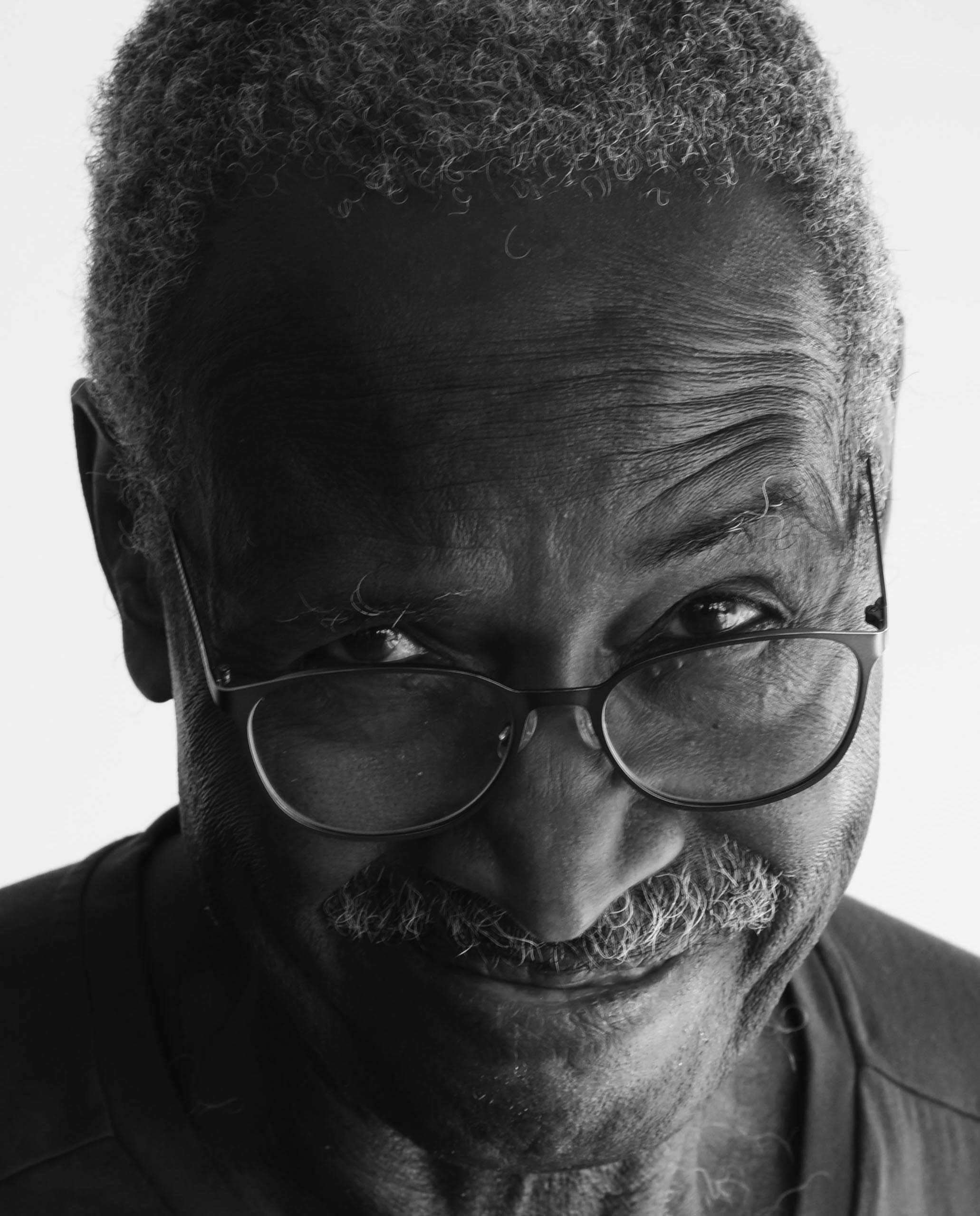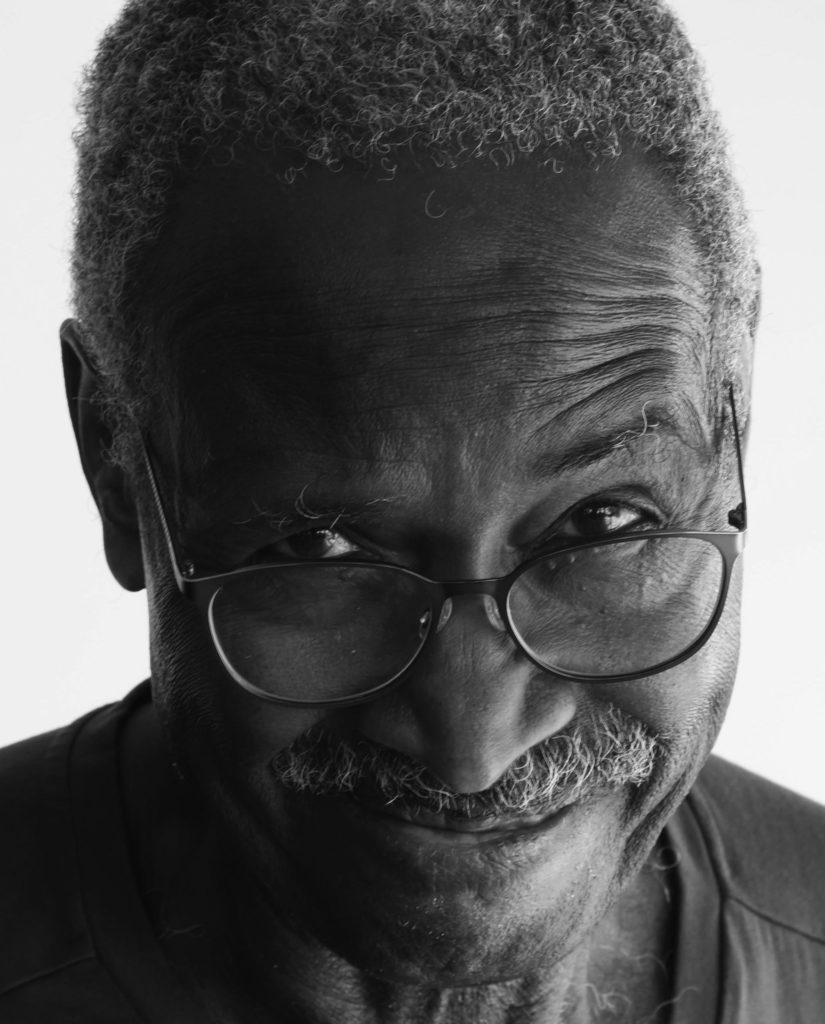

PARADOX
A Conversation with Jim Sclavunos
Multi-instrumentalist, producer and writer Jim Sclavunos has been a member of Nick Cave and the Bad Seeds since 1994. Alongside Lydia Lunch, he was an integral part of the No Wave scene in the late 1970s, playing in bands Teenage Jesus & The Jerks, Beirut Slump and 8 Eyed Spy, before joining Sonic Youth to record their first album, Confusion Is Sex. Since then he has recorded with a diverse host of artists including Grinderman, The Cramps, Marianne Faithfull and Iggy Pop, along with solo albums as The Vanity Set. Sclavunos’ work as a producer encompasses The Horrors, Gogol Bordello, Beth Orton, The Jim Jones Revue, Beth Jeans Houghton and The Wytches; under the moniker Silver Alert he has done remixes for Philip Glass, Depeche Mode, and Boss Hog, and in 2012 presented “Faustian Pact”, a live adaptation of Murnau’s Faust at The Perth International Arts Festival.
EAG: I’m writing on the topic of cool, and what’s cool, and who’s cool, and what are the criteria.
JS: I hope you’re not coming to me for answers.
EAG: Well, it’s funny, that’s what everybody keeps saying.
JS: But I wonder if that’s because there’s almost a stigma to attaching yourself to the idea of being cool, because it’s not cool to think you’re cool.
EAG: It’s not cool to think you’re cool, and I think too the topic makes a lot of people nervous—
JS: It doesn’t make me nervous, but it’s hard to…maybe it’s just a habit of a lifetime, but I’m not used to thinking of myself as cool. It’s usually something that I think of as something that’s assigned by other people to people other than me. And when people tell me I’m cool, not in like, “That’s cool, Jim,” or something like that, but cool in terms of a trend or a zeitgeist or a legacy, it amuses me more than flatters me.
EAG: Why’s that?
JS: I suppose there’s some flattery anytime anybody kind of implicitly compliments you. But it amuses me more, because it seems so removed from the process whereby I go about doing things, which is usually quite heated. So the temperatures seem misaligned.
EAG: Tell me about the first time in your life that you remember thinking something was really cool. Even if you didn’t know the word yet.
JS: I think Audrey Hepburn. In Breakfast at Tiffany’s. I can’t remember clearly enough to know how she came on my radar as a child, but I became aware of her as an image, as a icon. And she seemed to embody a lot of things that later on Twiggy seemed to embody. There was a sort of lightheartedness but also a reserve, a distance. There was a sort of elegance mixed with a kind of goofiness. And yeah, there was that hint of an accent that made her most ordinary gestures and comments somehow more exotic. And Twiggy kind of did the same thing later on. And, you know, I grew up in the ’60s so these…skinny ladies… [laughs] were sort of the burgeoning of my sense of female otherness.
Now since then I’ve learned that Raquel Welch is pretty cool, too. [Laughs] She was pretty much the opposite. But she didn’t have that same kind of alien quality, almost. She seemed like a product of Hollywood, whereas Audrey Hepburn seemed very much like something apart from that. And then later on, I started identifying that same sort of quality with Marlene Dietrich. And, you know, in the ’60s they had all this kind of late, late shows. I don’t know if they were still around when you were—
EAG: Yeah.
JS: —but, you know, in the pre-cable days if you managed somehow to stay up late, particularly if you had an indulgent babysitter, you could watch all these interesting movies that weren’t on in the daytime. And they were often from Hollywood’s golden age, but sometimes they were also foreign movies. And like I said, I don’t know when all these exotic European-type women started coming onto my radar; I can’t remember. But it was something that seemed very different from the women I was encountering in Brooklyn. And the way they spoke was completely and utterly unlike the way my peers spoke or the way my schoolmates spoke or the teachers. So there was something quite enchanting about it, and that’s where I first kind of started looking or projecting this idea that that’s cool or these women are cool. Because they had reserve, they were understated yet at the same time flamboyant. There seemed to be this real paradox to their demeanors that I couldn’t quite reconcile. And that was what was intriguing about them. And alluring.
“They had reserve, they were understated yet at the same time flamboyant. There seemed to be this real paradox to their demeanors that I couldn’t quite reconcile.”
EAG: Is that tension still part of your criteria?
JS: I think I use cool in a pretty ironic way these days. I’ll use it in conversation like, Oh, that’s cool, meaning, if you say so. I’ll accept your point of view reluctantly, but I’m not prepared to do battle over something that I consider potentially pretty trivial.
EAG: So removing the language aspect from it, what lights you up now?
JS: Well, loads of things. But I have difficulty thinking about them in terms of cool as applied to maybe taste or a signifier of a lifestyle that I’m attracted to. Not to pester the semantics aspect too much, but the other way in which I use “cool” is as a directive to musicians when I’m producing or arranging or bandleading. But it’s often to the drummer, and I say, “Play it cool.” And that’s like meaning don’t make it sound like you’re trying too hard. Hold back a bit. Show some reserve. And so in that way it’s kind of connected with that idea of what I identified in those female actresses when I was very young.
And all that’s before I actually became sort of clued in to music that I might consider cool. I think it really did start with film and film icons. And then I kind of became aware that Marlon Brando was allegedly cool. And that was a little trickier for me, first of all because he was male so he wasn’t quite as attractive to me; and also I had a toy monkey that was called Marlon. My parents told me his name was Marlon and it was probably some kind of in-joke on their part, you know, because Marlon Brando was like the hot actor at the time. So I couldn’t really look at Brando and really feel he was quite as cool as he was alleged to be, or even as cool as my monkey. I still have trouble with that. I mean, it’s hard for me to watch Apocalypse Now and not think of Marlon. The monkey, I mean.
EAG: Really, that works on so many levels.
JS: But I’ll tell you who I did really come to identify with the utmost in cool, and it’s kind of obvious, I suppose, to a certain generation and certain types of musicians of a certain generation. That was Lou Reed.
EAG: Oh, sure.
JS: Yeah. That was indisputable, you know. And everything he did up until he took up Tai Chi was for me the epitome of cool.
EAG: And talk about understated, right?
JS: Well, it was more that he was disdainful. And I started becoming aware of him in my puberty leading to my teenagehood, and that was the sort of posture that I found most attractive about him was his disdain. His withering disdain for almost everything under the sun. And his very elegant way of expressing it, both in terms of his look and his gift for lyrics and his stunning interviews, which were always the embodiment of complete and utter lack of respect for journalists, most journalists, and most of his fellow musicians. His own band included. And it wasn’t so much that I found that disrespect so attractive; I actually didn’t think it was a very attractive trait, you know, dissing musicians, dissing journalists. But the fact that he was so unapologetic about it and so consistent about it made him sort of a marvel to behold. He really seemed fearless. And maybe it was all coming from a deep lack of confidence or very troubled soul, but on the surface it came across as absolutely fearless, his not cottoning or seeming to want to even care or care what the consequences of what he said were. And of course that sort of behavior was a gateway for me through glam rock into punk. And ultimately No Wave, and all the sort of cartoonish behavior all that entailed. But I suppose, you know, I’m as guilty as the next punk rocker of, you know, on some level emulating Lou Reed. I admit it. And that’s probably not very cool, but if I am cool I guess I was in a spiritual journey for finding my own form of coolness. And that’s where I set out, the path I set out on, till I came to that strange fork in the road where I didn’t need to consciously or unconsciously emulate people I admired.
“Photographs are by their very nature the coolest medium, I think. Because they seize this one moment in time, this one perfect moment in time, and make a monument of it, a permanent index of this one monumental moment, where everything was perfect.”
EAG: When was that?
JS: I don’t know. I don’t know. I think I was too busy being alive to notice. But you know, you grow out of it, like you grow out of most things of your youth. Or you hope you grow out of it. And it’s probably in there still somewhere. I can still look at a picture of Lou Reed and my first thought is, Hey, that’s cool. And then I remember the other stuff I know about him, and I think, Yeah, he was cool. Or maybe just his picture was cool.
Photographs are by their very nature the coolest medium, I think. Because they seize this one moment in time, this one perfect moment in time, and make a monument of it, a permanent index of this one monumental moment, where everything was perfect. The lighting was perfect, the person’s expression and body shape. And the photographer either lucked out or had the keen eye to capture it. And it’s preserved forever. And all the imperfections that might otherwise have existed in this person’s life are irrelevant because this image is forever. And the camera is by its nature also a sort of a clinical device. It reflects what it sees; it captures what it sees. It’s not, apart from any darkroom trickery or other special effects. Joel Peter Witkin style. You know, apart from any of that kind of thing, the camera usually just captures what’s in front of it. And if you capture that one moment, the camera is sort of a passive observer; even though it’s being directed by a photographer it’s a passive observer. It doesn’t overtly manipulate reality; it just captures it. And so it’s cool in the sense, again, of being held back, of being reserved, of being almost a sort of passive engagement rather than a proactive engagement. Does that make any sense?
EAG: That makes perfect sense. Are there other concepts or things that fall into that category for you?
JS: Not as much, no. Because film, you know, you would think film is a very closely related; it’s basically the same technology, right? But because it deals in time rather than a single frozen moment in time, it’s more…I can’t think of the word I’m looking for. Things get manipulated more and so there’s more of a subjective sort of activity going on. It’s not as phlegmatic. It’s more fiery. To use a sort of alchemical sort of analogy. But also the way…I guess painting comes the closest, at least from a observational point of view, because you have to sit there and look at it and kind of digest it. And you have to be still; you can’t be like jumping back and forth. It has to happen in that moment and it only can happen in that moment. So everything about something that’s sort of stationary and in a frame demands a sort of passive regard, more so than films or books or watching theater or dance or any of the other arts. It sort of almost demands a meditative eye. And there’s usually one single ideal position to look at any of these things. And it’s almost like time has to stand still the same way you have to stand still, whereas the other arts unfold in time. You’re reading a book, it takes time to read a book. You have to turn pages. Sometimes you have to reread a passage, you know. It’s something that involves a sort of an intellectual motion. Likewise film, likewise theater. Photography more than any other is preserved in amber. There’s a moment preserved in amber. Painting comes close, but the process is not as refined as the photographic moment. Does it make sense, what I’m saying?
EAG: Yeah, totally. I see that.
JS: I’d love to have read the Susan Sontag book on photography before I said any of that stuff, because she’s got a good way of analyzing things and sometimes in a way that might undercut some of my thoughts or enhance my thoughts. But I haven’t read it. Sarah [his wife, publicist Sarah Lowe] just acquired it, and neither of us have read it. And she’s a pretty cool lady.
I guess I’ve been equally drawn to individuals of both genders that I thought were cool. I never thought of Susan Sontag as a hottie, but the idea of an intellectualized woman, a woman that was unsparingly intellectual, had a sort of allure beyond the scope of her thoughts. And I never could say that I felt sexually attracted to Lou Reed, but I could see that there was something about him that was sexually alluring, in some weird way…something in a sort of panther-like, cool sexual vibe that I just thought, Yes, there’s a sexual component here. It’s not something that makes me horny, but it’s something I think in some way is a sublimation of a sexual impulse. Yeah. It somehow is sublimated, not in the sense of the sublime. That’s a different set of ideas altogether, but sort of sublimated in a Freudian way, almost like fetishistic kind of appeal of an image.
EAG: Transference, almost.
JS: Yeah. Transference. That’s a good way to put it.
EAG: On a different note, I was amused to see that an old photo of you appeared in the final episode of Parts Unknown.
JS: Did it?
EAG: Yeah. Because Lydia Lunch was in that episode.
JS: [Talking in the background] Oh, yes. Okay. Sorry, I didn’t…that’s how cool I am. I don’t watch TV. I didn’t actually know what Parts Unknown was.
EAG: Yeah, the last Anthony Bourdain series.
JS: I don’t really know anything about him. Marty, the bass player in the Bad Seeds—who I also think is very, very cool, I’ll have you know—he has been an avid reader of Anthony Bourdain’s books. But I’ve never picked one up myself.
EAG: I wondered if you guys had crossed paths at any point, because you were kind of in the same time and the same place in the ’70s.
JS: Not knowingly. What was the context in which this picture showed up? Was it just sort of showing what Lydia looked like back in the day?
EAG: Yeah. It was just like a real quick overview of her career. And then they had lunch.
JS: Did she give him a hard time?
EAG: Oh my God, yes.
JS: Well, I’m certainly acquainted with Lydia’s style of speaking.
“Can people who are provocateurs be cool? Not in my traditional sort of understanding of what cool is.”
EAG: Good God. I was not ready for some of the things she said.
JS: Well, she’s always tried to be a provocateur. And that poses an interesting thing: can people who are provocateurs be cool? Not in my traditional sort of understanding of what cool is. And when I say traditional, I mean that kind of reaches back to the model of the beatniks and their bohemian predecessors and then the various forms that coolness took in the swinging ’60s. And then the coolness of punk rock, as most iconically embodied by, say, the Ramones or Willy DeVille or something. Lydia always has been an outspoken person that has a sort of a…it’s a high-energy demeanor usually. And this is no slight against Lydia or what she does as an artist or a personality, but she doesn’t, for me, evoke the idea of cool. She evokes the idea of Lydia, and that’s a unique and special thing in itself. And a valuable thing. But I can’t think of her as cool in the same way I think of a more reserved personality is cool.
JS: I’ll tell you what No Wave band—if we can talk about No Wave, if that means anything to you…
EAG: Of course it does. I’ve done my homework, Jim.
JS: Okay. Well, Mars, that seemed like a cool band. And the people in it were cool, because their social behavior was so bizarre and seemed so disconnected from normal social behavior. And the music they were making on stage was so unlike rock and roll music of any form, that they seemed to me very cool.
EAG: What was their social behavior like?
JS: Ranging from catatonic to hallucinogenic. I don’t know if they were druggies; I don’t think they actually were. I think they were just very unusual people in a very unusual band. And maybe some of it was affected, but I think a lot of it wasn’t. I think they were just really oddballs. And by comparison with, say, Lydia Lunch and James Chance, who were always kind of very provocative and confrontational, Mars were very sort of off in their own world. Planet Mars, I guess. Anyway, enough about No Wave.
EAG: It seems like that commitment is a big part of what you’re talking about. A commitment to doing your own thing and sort of not taking the rest of the world all that seriously in terms of how much it dictates what you do.
JS: Yes, but there are a lot of people who claim to do that and yet are clamoring for attention all the time. And their behavior bespeaks that. They say, “I don’t care about what the rest of the world thinks. Do you hear me? I don’t care. I really don’t care. I hate you all. Do you hear me? I want to make sure you spell my name correctly when you quote me saying how much I hate what you think of me and how much I don’t care. Did you get that? And if you want more information, my manager and publicist can be reached at this number. But I don’t care what you think. Am I on the front cover? I don’t care.”
That’s how a lot of those people come across to me. And I don’t believe it for a second that they don’t care. I do believe that they’re doing their own thing, but I don’t think that that’s the entirety of the story. Lots of people do their own thing. Nuns do their own thing. I’m sure there are some cool nuns out there, and some that are not so cool. I mostly was educated by the ones that weren’t.
Ω


